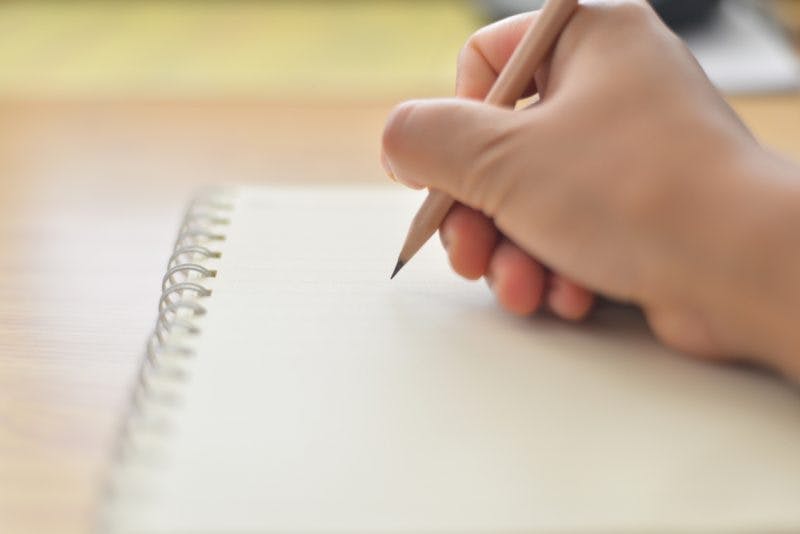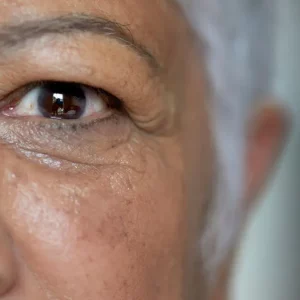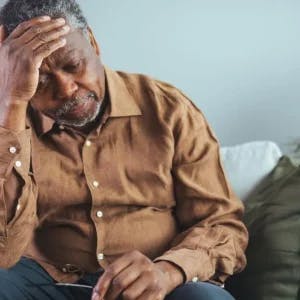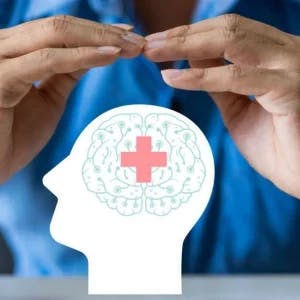The inability to write after a stroke is called agraphia. It’s primarily caused by impaired motor control in the hand (peripheral agraphia) or disrupted language processing skills (central agraphia). Writing exercises for stroke patients can help improve agraphia by retraining fine motor skills and cognitive functioning.
This article includes the most effective writing exercises for stroke patients with peripheral or central agraphia.
Writing Exercises for Stroke Patients with Peripheral Agraphia (Hand Weakness)
Patients with peripheral agraphia know what they want to write, but they struggle with the fine motor control to manage writing physically due to weak grip strength or tremors. Writing exercises for stroke patients focus on improving hand function and handwriting.
Below are some writing exercises for stroke patients that improve strength and dexterity in the hand:
1. Practicing Grasp and Release Exercises
Regaining the ability to grasp and hold a pencil is the foundation to writing again after a stroke. By practicing grasp and release activities, you can improve your ability to hold a pencil.
The key is to practice a high number of repetitions of each exercise to help rewire the brain. Especially after a stroke, high repetition is key to regaining motor control.
But you also may notice some muscle fatigue. The smallermuscles fatigue more easily. Don’t let fatigue keep you from getting in many repetitions.
After some rest begin again training those fine muscles/nerves. Sometimes, the further away (more peripheral) from the core of your body, the slower the recovery. For example, hand function often takes longer to improve than arm function.
Therefore, take frequent, short breaks during writing exercises to prevent frustration or maladaptive compensation to complete the movement. Remember your body has to relearn these motor skills and that will take many repetitions over some time.
Discover grasp and release exercises that can improve your grip »
2. Using a Universal Cuff
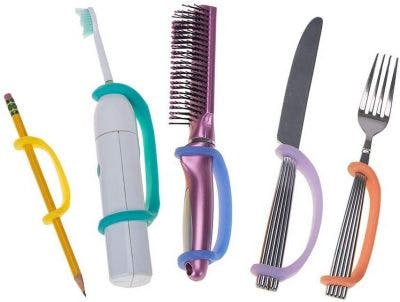
If you’re experiencing difficulties holding a pen or pencil after a stroke, using a universal cuff may assist with maintaining a functional grip on the pen. These aids keep you engaged and attempting movements which stimulate your brain to reform connections.
By sliding your writing utensil inside the slits of the universal cuff, you create a handle that helps ensure your writing utensil will not drop, even if you lose your grip on it.
There are additional adaptive devices that can assist with writing. An occupational therapist can help you decide which item is best suited for successful writing skills. They are also best suited to provide you with specific exercises or even stretches to address your unique weakness since people vary in their limitations after a stroke.
3. Pressing Piano Keys
Pressing on piano keys is a great way to develop finger strength, dexterity, and hand-eye coordination. Whether this is a familiar activity or not it is very stimulating for your nervous system due to the auditory inputs. When you perform an activity that is familiar, the brain usually has more cells/resources toactivate the muscle movement again.
These fine motor skills are essential for improving handwriting after a stroke. Playing the piano is a fun and engaging activity that makes it easy to perform the repetitions necessary to promote neuroplasticity.
4. Tracing
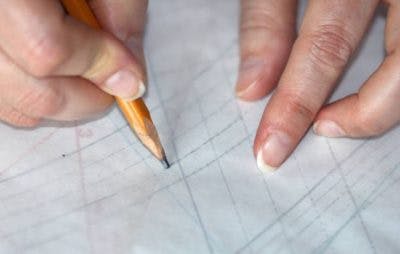
Following a visual cue is helpful for your brain as it is finding a new way to direct your muscles. Have someone write a few words on a piece of paper so that you can use it as a reference to trace over.
Ask them to write large and use a thick marker so that the words will be easier to trace. You can also create your own template on your computer, adjust the font size and thickness, and print it to create your reference sheet to trace.
Having a reference sheet will encourage you to compare and fix your mistakes for more accurate handwriting.
5. Using Grasp and Release Rehab Technology
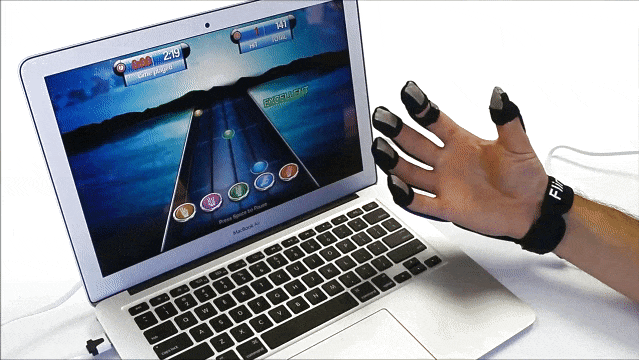
Technology helps us engage with exercises for stroke patients with less monotony and boredom. Thankfully there’s a well established gripping device that will get you to engage with writing exercises for stroke patients while having a good time too.
This rehab tool focuses specifically on grasp and release activities and is called MusicGlove from Flint Rehab. MusicGlove combines music, gaming, and hand therapy for an engaging rehabilitation experience that is clinically proven to improve hand function in 2 weeks.
By following the keys on the screen and pinching your fingertips together, you practice curling your fingers in the same way you would to grip a pen.
6. Connect the Dots
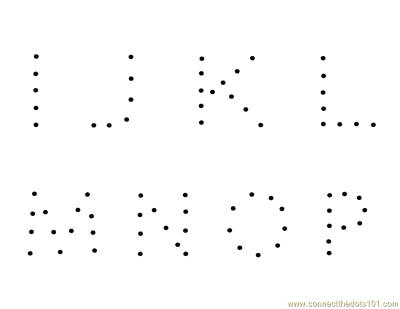
Have someone write letters in dots, or find a worksheet like this one online and print it. Visualize the letters and connect the dots. This activity will guide your writing and familiarize your brain with the appropriate movements.
7. Finger Resistance Training
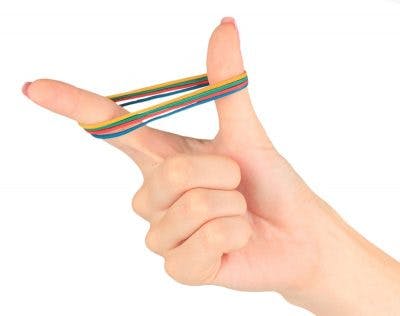
Place your fingers inside a rubber band and separate your fingers. The resistance of the rubber band will help strengthen your finger muscles. To increase resistance, add more rubber bands.
Writing Exercises for Stroke Patients with Central Agraphia (Language Processing Difficulties)
With central agraphia, cognition is affected. Even though you may be physically able to write, you may experience difficulties remembering how to spell or write down the correct letters.
Central agraphia is generally treated by working with a speech-language pathologist. These therapists are highly trained in helping stroke patients relearn how to write words after a stroke.
Try these writing exercises if you have central agraphia:
8. Copy and Recall Treatment (CART)
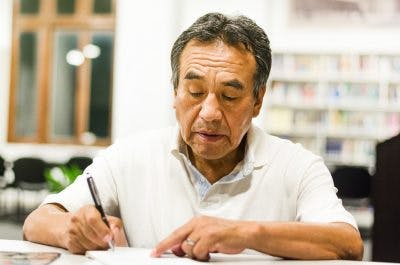
Copy and recall treatment involves repeatedly copying and re-writing to ensure that the individual can spell the targeted words. The more the patient writes the word, the more successfully its spelling is retained.
one technique a speech-language pathologist may emply involves writing a word down and while say it aloud. Then, the patient will be asked to copy the word down multiple times.
If the patient is successful, the speech-language pathologist will take away or cover all examples of the written word and ask the patient to write it down from memory multiple times.
Many repetitions are involved to engage the brain again. Asking your doctor to prescribe treatments from a speech-language pathologist will put you on a good path towards practicing at home until your brain begins to adapt.
9. Anagram and Copy Treatment (ACT)
Anagram and copy treatment involves training the patient to recognize the letters that make up a word and arranging them in the proper order. A speech-language pathologist will display the letters that make up a word in scrambled order and then ask the patient to spell the target word using the letters available.
If correct, the patient will be asked to write it down multiple times. If incorrect, the speech-language pathologist will write it down for the patient, and then have the patient copy the correct spellin multiple times. The letters will be re-scrambled until the patient can independently write the word correctly
Getting Back to Writing After Stroke
If you struggle with agraphia after a stroke, make sure you get an accurate diagnosis from your Speech-Language Pathologist. There are a variety of ways your stroke may have impaired this complex skill. A correct diagnosis will help you practice the most relevant exercises to improve writing after a stroke.
It’s important to promote neuroplasticity by performing high repetition of each exercise. More repetition means more stimulation for the brain, which helps the brain rewire itself and regain control of the hand.
We hope these exercises help you get back to writing after your stroke!

